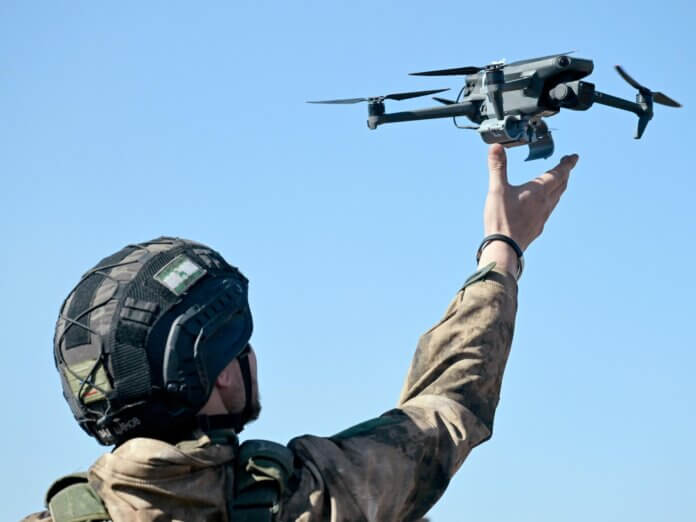
Armada has obtained a Russian language military manual providing guidance on tactical first person view uninhabited aerial vehicle employment by Russia’s land forces.
The manual provides a treasure trove of details regarding the electromagnetic aspects of Russian tactical First Person View Uninhabited Aerial Vehicle (FPV UAV) use in the ongoing war in Ukraine. Mass UAV usage at the tactical edge is becoming a hallmark of the ongoing war in Ukraine.
The manual is a very recent publication having been drafted and published by the General Staff of the Armed Forces of the Russian Federation this year. The introduction makes clear that the manual provides guidelines for tactical commanders and FPV UAV operators. The manual stresses that its provisions “should be applied creatively, in accordance with the conditions of the situation.”
Aircraft Types
Russian land forces FPV UAVs are to be deployed to target enemy personnel, unprotected, lightly armoured and fully armoured vehicles. The aircraft provide intelligence, surveillance and reconnaissance support, and assist tactical command and control. Standard FPV UAVs deployed by Russian forces include Boomerang, Starling, XL-10, Kofer, Piranha-7, Lirian, IBX-10, Limba-7, TVH-1, IBX-2 and NBX-3. The latter aircraft, the manual notes, uses artificial intelligence in its software.
The manual recommends that a thorough analysis of the “radio-electronic situation is carried out by spectrum analysers” to determine whether enemy forces are already performing electronic attack prior to a sortie. The survey will help UAV operators decide the frequencies they will use to connect to and from the aircraft. To improve the survivability of the unit launching the drone, the manual recommends using decoy antennas. High points, tall buildings, telegraph poles and elevated objects should be employed to site actual, and decoy, antennas. These antennas can be dotted around the location of the UAV’s operator to transmit fake radio signals. The hope is that enemy communications intelligence cadres are frustrated in trying to find the actual antenna hosting the Radio Frequency (RF) link between the pilot and the aircraft.
Frequencies
Prior to the sortie UAV pilots are to notify local Russian EW units of their intention to fly, and the frequencies they wish to use, to avoid the latter inadvertently jamming the UAV’s RF links. This seems to imply that FPV UAVs Russian land forces are using cannot operate independently of Russian jamming in their locale. The manual continues that land forces typically use frequencies of 390 megahertz/MHz to 490MHz, 850MHz to 960MHz, and 1.2 gigahertz/GHz and 2.4GHz for aircraft control. Frequencies of 2.4GHz and 5.8GHz are employed for downloading video imagery from the UAV. Details of the frequencies used by these aircraft are depicted in the table below:
Russian Land Forces Tactical FPV UAV Aircraft Control and Video Link Frequencies
| FPV UAV Type | Aircraft Control Frequencies | RF Video Link Frequencies |
| Boomerang | 433MHz, 868MHz and 915MHz | 5.8GHz |
| Courier | 868MHz, 915MHz and 2.4GHz | 5.8GHz |
| Chimera-7 | 433MHz, 868MHz and 915MHz | 5.8GHz |
| Piranha-7 | 868MHz and 915MHz | 5.8GHz |
| Piranha-10 | 868MHz and 915MHz | 5.8GHz |
| PVC-1 | 868MHz and 915MHz | 5.8GHz |
| Starling | 433MHz, 868MHz and 915MHz | 5.8GHz |
| XL-10 | 868MHz, 915MHz and 2.4GHz | 5.8GHz |
The manual recommends that troops continue to share their experiences of using FPV UAVs with the armed forces so that these can be folded into future editions of the manuals. It even lists two email addresses for the Department for Summarising Combat Experience; [email protected] and [email protected].
The Russian and Ukrainian armies are reliant on FPV UAVs at the tactical level. The manual provides insights into how these aircraft are deployed and their electromagnetic characteristics. Understanding such information will help those devising countermeasures, electronic or otherwise, against Russian uninhabited aerial vehicles.
by Dr. Thomas Withington












